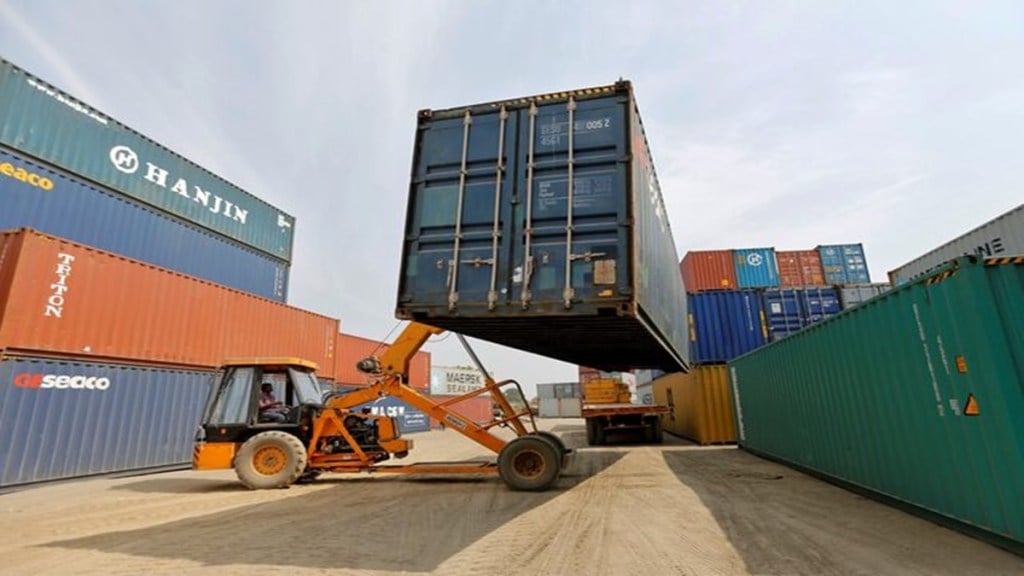India’s merchandise trade deficit jumped to its highest in 10 months to $ 29.6 billion in August, as exports shrank by a steep 9.3% on year, even as import growth to slowed to 3.3%. The contraction in export shipments was the sharpest in any month since July 2023, when the slump was 10%. In August last year, goods exports had grown 3.5%.
Exports dropped to $ 34.71 billion in August this year, from $ 38.28 billion in the year ago month. The drop of $ 3.57 billion in overall exports on an annual basis can be entirely attributed a 37% fall in value of petroleum exports to $ 5.9 billion from $ 9.5 billion.
Imports in August stood at $ 64.36 billion. One reason for the fall in exports of petroleum products is the subdued crude oil prices.
Gold imports in August of this month were $ 10 billion, more than double the level of $ 4.9 billion in the year ago period. A surge in gold imports is explained partially by 30% annual increase in global prices of the yellow metal in August. G
Drivers of gold demand could be the cut in import duties announced in the budget and jewellers stocking up before the festive season, commerce secretary Sunil Barthwal said.
While petroleum product exports suffered, crude oil and other petroleum import bill fell 32% on year to $ 11 billion.
In the first quarter of FY25, India’s merchandise exports grew by 6% aided by a very favourable base, while in July-August period of the second quarter, onward shipments fell by 5.7%. The situation seems worrisome,as the country’s exports had declined on year in FY24.
The high trade deficit has raised some concerns over the current account. With the unexpectedly sharp widening in the merchandise trade deficit in August 2024, we are apprehensive that the current account deficit (CAD) will rise to 1.5-2% of GDP in the current quarter, said Aditi Nayar, chief economist at Icra. Earlier, some estimates had pegged CAD in Q1FY25 at 1.4%, up from 1% in Q1FY24.. The Reserve Bank of India is expected to publish the balance of payments data for Q1FY25 shortly.
However, Barthwal said: “trade deficit is not a matter of concern for emerging economies. China maintained large trade deficits. There is a huge consumption demand in the economy which is growing at double the rate of other countries,” he reasoned.
While gold demand for domestic consumption remained elevated, gems and jewellery exports continued to contract. The exports from the sector have been negative since 2022-23. In August it fell 23% on year to $ 1.9 billion.
Other key sectors of manufacturing exports like electronics, engineering goods, drugs and pharma, chemicals, readymade garments and plastics continued to do well.
Engineering goods exports grew 4.3% to $ 9.4 billion, electronics exports grew 7.8% to $ 2.3 billion, pharma exports were up 4.6% to $ 2.3 billion while chemical exports were up 8.3% to $ 2.3 billion.
“In the current global situation, exports are a huge challenge. Reasons like slow down in China and continued recession in European Union and US too are impacting the exports. Dipping oil prices and rise in transportation costs due to the Read Sea crisis are hurting the shipments,” Barthwal said.
In April-August merchandise exports were up 1.14% to $ 178.6 billion while imports were up 7% to $ 295.3 billion.
Services exports during August were up 6.8% ro $ 30.69 billion while there was a slight increase in imports to $ 15.7 billion. Overall exports in April-August were up 5.3% to $ 328.8 billion while imports were up 7.2% to $ 375.3 billion.
